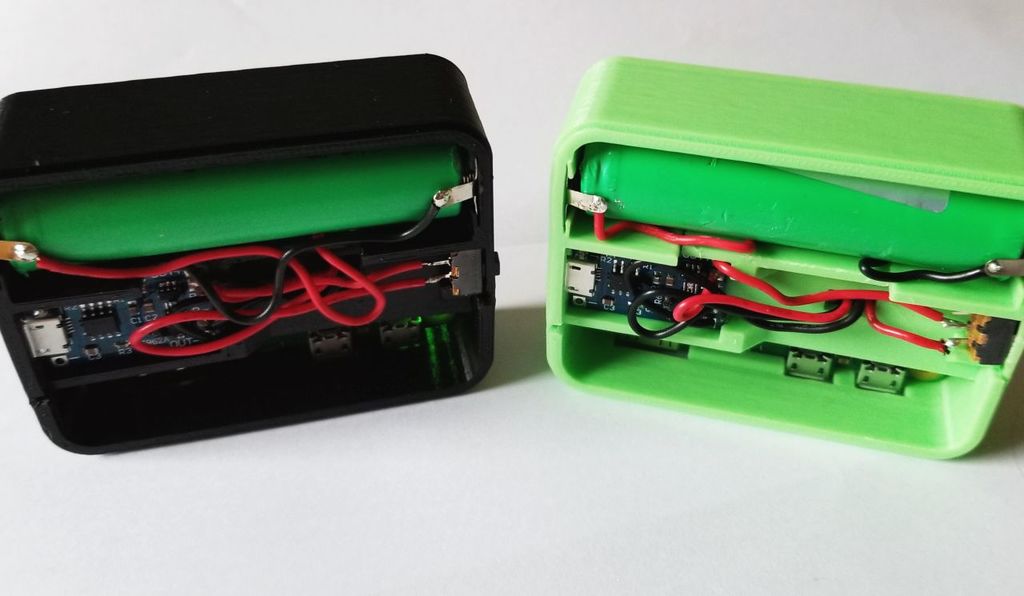
Pi Zero Node - Friction Fit
thingiverse
A sleek, compact Pi Zero node case! Drawn from [blankdesign's](https://www.thingiverse.com/thing:2841417) innovative design, this case is held together by friction and relies on the flexibility of PLA to keep components secure. The USB charging slot will need adjustment if a small TP4056 charger is used, but I've also included the STEP file to simplify the process. Components list: Pi Zero / Pi Zero W 18650 Li-On Cell [SPDT Switch](https://www.amazon.com/gp/product/B007QAJST6/) [TP4056 Li-Ion Charger](https://www.amazon.com/gp/product/B01DRT4PWY/) [Silver Tone Metal Spring Connectors](https://www.ebay.com/itm/100pair-Silver-Tone-Metal-Spring-Battery-Contact-Plate-Set-For-AA-AAA-Batteries/202077747472) Assembly Instructions (Note: don't add an SD card to the Pi Zero until the end!): 1. Solder all connections except for the SPDT switch, snaking wires through case insert holes to hide messy wiring. 2. Gently place the Pi Zero with the connector-side first and push against friction tab to pop it into place. 3. Place TP4056 into case-insert, holding it against plastic while placing the case-insert USB-charger side first into the case. 4. Push spring terminals into plastic inserts, ensuring correct orientation of negative and positives. Soldering wires inside-to-out makes lid fitting easier. 5. Push the case-insert down with your thumb while sliding the SPDT switch into place. The case insert keeps the switch in place as you release tension. 6. Solder the SPDT switch so that Out+ goes to the middle prong, and Pi Zero 5v goes to the left prong. 7. Place an 18650 cell into the case, ensuring proper contact with a multimeter. Add a small solder blob to the positive terminal if necessary. 8. Ensure the lid pressures down onto the bottom case, which should snugly snap into place. 9. Slide a Micro SD card into the Pi Zero through the opening and power on the node. Blinking green lights indicate you're ready to go!
With this file you will be able to print Pi Zero Node - Friction Fit with your 3D printer. Click on the button and save the file on your computer to work, edit or customize your design. You can also find more 3D designs for printers on Pi Zero Node - Friction Fit.
